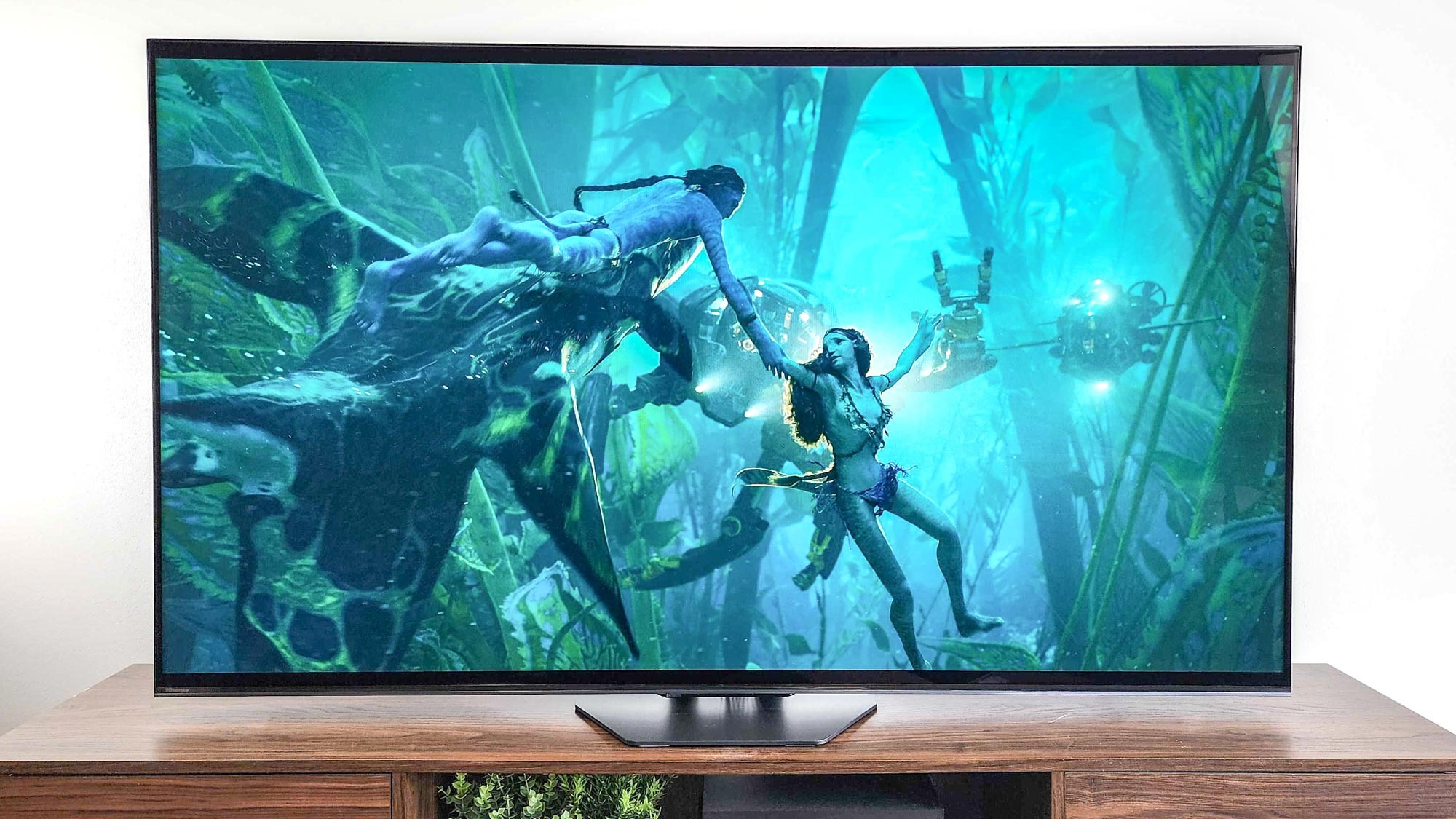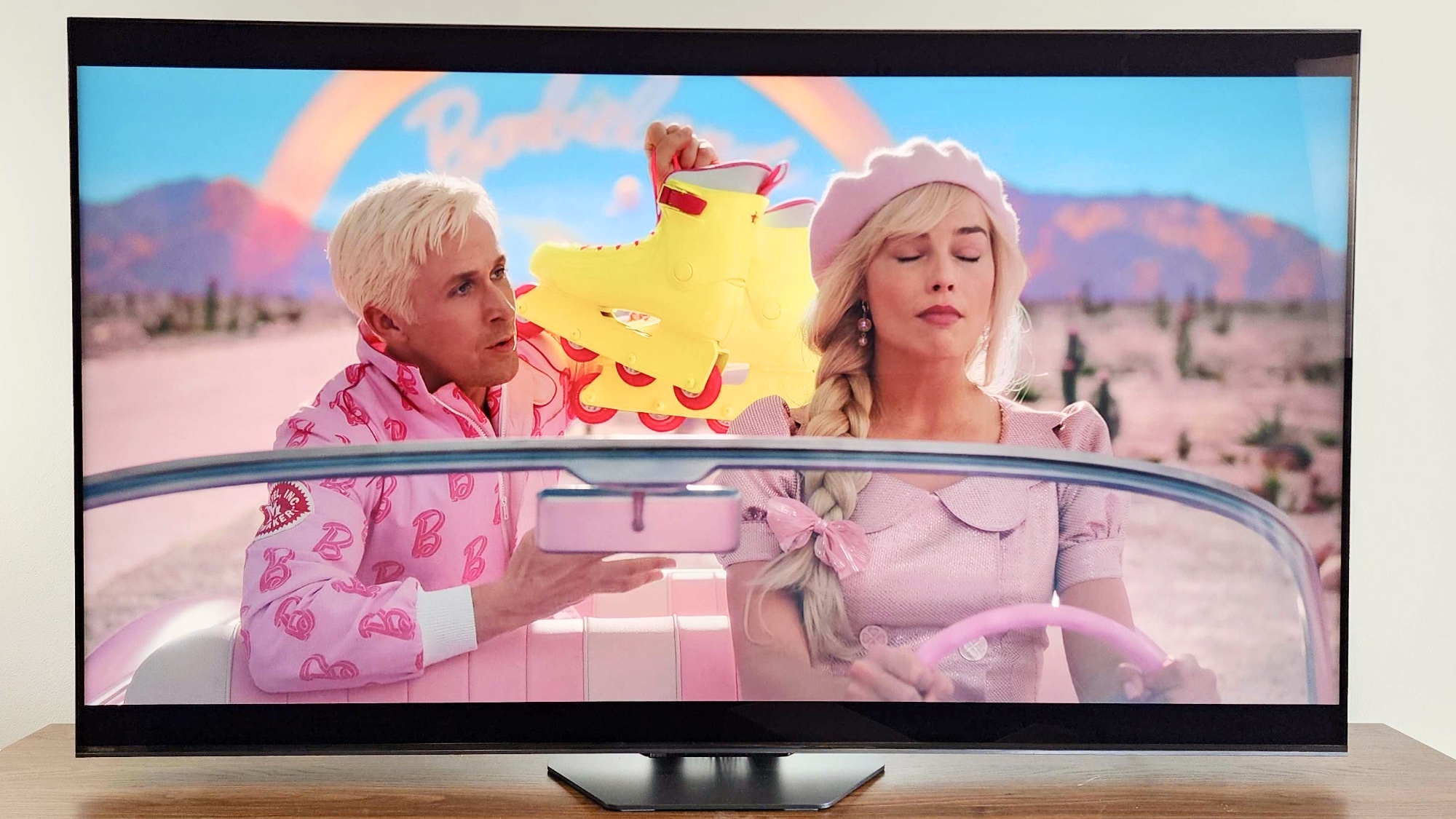
Like everything else, the prices for TVs have gone up this year. QLED TVs that might’ve started at $1,999 or $2,499 last year are now closer to $3,000. And that means having to make some tough choices on which TV you should buy in 2024.
Take, for example, the hotly anticipated Samsung QN90D QLED TV. A 65-inch version of the brand-new flagship Samsung Neo QLED TV will set you back $2,699 right now — roughly $1,300 more than last year’s award-winning Samsung QN90C QLED TV that can be found for $1,499 at Best Buy.
With the cost of living continuing to increase, it can be hard shelling out so much for a new TV. But the good news is that, thanks to some recent test data we’ve collected on both the new Samsung QN90D and the significantly cheaper Hisense U8N, you might not have to: The Hisense U8N looks like it offers better performance for $1,000 less.
Samsung QN90D vs Hisense U8N test data
| Row 0 - Cell 0 | Samsung QN90D | Hisense U8N |
| Price for a 65-inch TV | $2,699 | $1,499 |
| SDR Brightness (10%, in nits) | 2043.4263 | 3469.0079 |
| Delta-E (lower is better) | 2.1852 | 3.2403 |
| HDR Brightness (10%, in nits) | 2040.967313 | 3397.969206 |
| UHDA-P3 Gamut Coverage | 94.76% | 96.76% |
| Rec. 2020 Gamut Coverage | 77.3% | 81.92% |
| Input latency (in milliseconds) | 9.6 | 13.1 |
If you aren’t well-versed on TV testing data metrics, what you’re seeing above is that the Hisense U8N does in fact beat the Samsung QN90D in most categories. The U8N has the higher overall brightness (we measure this in nits) and color vibrancy (measured in percentage covered of a given color gamut, in this case both UHDA-P3 and Rec2020).
That’s not to say that the QN90D is a slouch in those categories, however. With over 2,000 nits of peak brightness in a 10% window, the Samsung QN90D should be able to display some truly eye-watering experiences with HDR content.
That’s not to say that the QN90D is a slouch in those categories, however. With more than 2,000 nits of peak brightness in a 10% window, the Samsung QN90D should be able to display some truly eye-watering experiences with HDR content. Its color saturation of 77.3% in the Rec2020 color gamut, while lower than the U8N’s 81.92%, is still miles ahead of other models.
The two places where the Samsung excels over the Hisense is in its input latency tests where it clocked in at 9.6ms compared to the U8N’s 13.1ms and its color accuracy score. The latter is measured using a colorimeter and CALMAN calibration software that takes a “true” version of a color and measures it against what it sees on the screen. The variance between those two values is the Delta E score, where a lower score means the TV is more accurate. The Samsung scored a 2.1852 while the Hisense U8N scored 4.2619.
While input latency can’t be reduced beyond the number we saw when we tested these TVs in their respective gaming modes, color accuracy can be improved with calibration — so don’t worry too much if you’re on team Hisense.
Sign up to get the BEST of Tom's Guide direct to your inbox.
Get instant access to breaking news, the hottest reviews, great deals and helpful tips.
Samsung QN90D vs Hisense U8N: motion processing and upscaling

TV test data tells exactly half the story when it comes to a full TV review. We use this test data to make accurate comparisons between models — we can safely say that the Hisense U8N is the brighter TV given the test data — but our tests aren’t the end-all, be-all.
We leave some very crucial tests to our reviewers, and that includes how well the TVs are able to upscale sub-4K content and process motion. We can photograph these things and lodge complaints with the manufacturers themselves, but there’s no real “test” for them.
To that end, we’re not counting the Samsung QN90D out completely. In the past, Samsung’s upscaling technology has been miles ahead of Hisense’s — a trend we don’t see reversing course anytime soon. Admittedly, neither Samsung nor Hisense are known to have superlative motion processing capabilities (you’ll want a Sony TV for that), so it’s a toss-up which of the two will come out on top in that category.
What we need — and are right in the middle of conducting, actually — are hands-on testing with these two screens. They're with our reviewers now, so it won't be long until we know how they'll stack up in these last two categories.
Samsung QN90D vs Hisense U8N: Outlook
On paper, the Hisense U8N looks to be a budget marvel, delivering the performance of a TV that costs nearly twice as much for $1,500.
With just our test data in hand, we're not ready to declare any winners or losers — but what we can say for sure is that, on paper, the Hisense U8N looks to be a budget marve for $1.500l, delivering the performance of a TV that costs nearly twice as much.
Historically, that's what we saw happen last year with the Hisense U8K (hence why it holds the No. 1 spot on our list of the best TVs), and it wouldn't surprise us in the least if that trend continues on in 2024.
We'll have to wait to hear what our reviewers think before we can say for certain which one is worth your ever-harder-earned dollar, but given the price discrepancy, it's safe to say the Hisense U8N has the early lead.
Looking to save even more money on a TV this year? Consider last year's Hisense U8K and Samsung QN90C — two of the best TVs you can buy, now at their lowest prices ever.

Nick Pino heads up the TV and AV verticals at Tom's Guide and covers everything from OLED TVs to the latest wireless headphones. He was formerly the Senior Editor, TV and AV at TechRadar (Tom's Guide's sister site) and has previously written for GamesRadar, Official Xbox Magazine, PC Gamer and other outlets over the last decade. Not sure which TV you should buy? Drop him an email or tweet him on Twitter and he can help you out.
